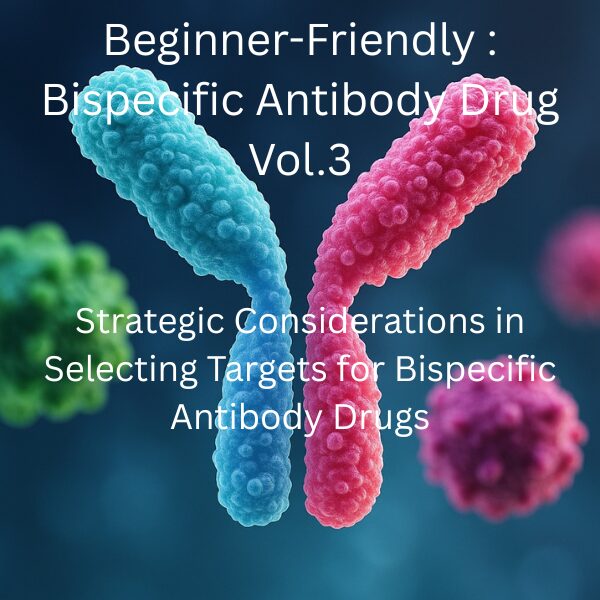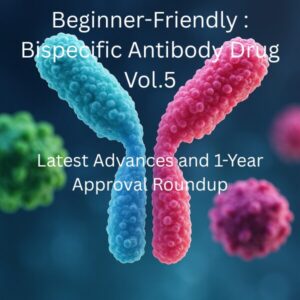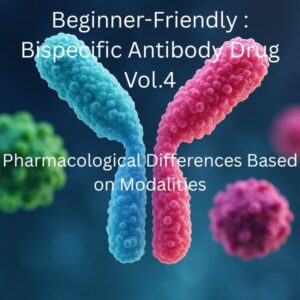In this third installment of our Beginner-Friendly Bispecific Antibody Drug series, we delve into the crucial question: “Which targets should be selected?” Target selection is a core strategic decision in bispecific antibody development, directly influencing efficacy, specificity, safety, and eventual clinical success. This article breaks down key considerations with examples to help beginners navigate the target selection process.
1. Why Target Selection Matters in Bispecific Antibody Development
Unlike monoclonal antibodies, bispecific antibodies (bsAbs) must engage two targets simultaneously. This dual-targeting mechanism can lead to synergistic effects but also poses complex challenges in choosing appropriate antigens. The right target combination can result in enhanced tumor specificity, improved immune cell redirection, or blockade of redundant signaling pathways.
2. General Classification of Target Types
- Tumor-Associated Antigens (TAAs): Expressed primarily on tumor cells, such as HER2, EGFR, and CEA.
- Immune Cell Surface Markers: Including CD3 (T-cell activation), CD16 (NK cells), or CD28 (costimulatory signal).
- TME (Tumor Microenvironment) Targets: Such as PD-L1 or VEGF, which regulate immune evasion and angiogenesis.
- Novel Tumor-Specific Epitopes: Discovered through neoantigen profiling and spatial omics techniques.
3. Key Considerations When Selecting Targets
3.1 Target Expression and Tumor Selectivity
Targets should ideally have high and homogeneous expression on tumor cells while being absent or minimal in healthy tissues. For example, BCMA in multiple myeloma is a popular target due to its tumor-specific expression.
3.2 Internalization Rate and Accessibility
Targets that allow antibody internalization (e.g., EGFR) can be suitable for delivering cytotoxic payloads, while surface-anchored targets with minimal endocytosis are better for immune redirection approaches.
3.3 Functionality and Mechanistic Complementarity
Combining a tumor antigen with an immune cell activator (e.g., CD3 x GPC3) enhances immune engagement. Alternatively, dual blockade of receptors like HER2 x HER3 can suppress compensatory signaling.
3.4 Cross-Reactivity and Off-Tumor Toxicity
Antigens also expressed in normal tissues (e.g., HER2 in the heart) can lead to dose-limiting toxicities. Carefully balancing efficacy and safety through target density thresholds or conditional activation designs is essential.
4. Target Combinations: Strategic Approaches
- Tumor Antigen x Immune Activator (T-cell/NK): Most common format, e.g., CD3 x BCMA (Elranatamab).
- Dual Tumor Antigens: Increases tumor selectivity, e.g., EGFR x cMET.
- Inhibitory Receptor x Co-stimulatory Molecule: Combines checkpoint blockade with immune activation, e.g., PD-L1 x CD28.
5. Emerging Tools for Rational Target Selection
- Spatial Transcriptomics: Maps gene expression in tissue context to identify tumor-restricted targets.
- Single-cell RNA-seq: Dissects tumor heterogeneity and reveals subclonal targets.
- Proteomics and Cell Surfaceome Profiling: Helps verify surface protein abundance.
6. Case Study: Target Selection in Elranatamab
Pfizer’s Elranatamab targets BCMA (on myeloma cells) and CD3 (on T cells). The selection of BCMA was based on its high expression in multiple myeloma and low expression in normal tissues. CD3 ensures robust T-cell engagement. This combination demonstrates how rational target pairing can enhance antitumor efficacy with manageable toxicity.
7. Summary
Target selection in bispecific antibody design is a strategic exercise requiring an understanding of tumor biology, immune engagement, and safety profiles. As technology evolves, target discovery will become increasingly data-driven, enabling more precise and effective bsAb therapies.
🔗 Related Articles / Series Links
- Therapeutic Trends 2025: What to Watch
- Introductory Series Index
- #1: What Are Slimming Drugs? A Gentle Introduction to Anti-Obesity Medications
- #1: What Are Antibodies? The Origin Story of ADCs – A Precision Cancer Weapon
- In vivo CART Series
- #1: What Is CAR-T? The Story of Emily Whitehead
- #2: The Technologies Behind In Vivo CAR-T
- #3: Key to Precision and Safety: Designing Smart CAR Expression
- #4: Deep Dive into CAR Structure: The Latest in Co-stimulation and Signal Engineering
- #5: Clinical Trial Frontlines and Emerging Biotechs
- #6: Emerging Technologies Addressing In vivo CAR-T Challenges
- #7: Key Figures Shaping the Future of in vivo CAR-T
- #8: Global Strategies Shaping the Future of in vivo CAR-T Development
- Bispecific Antibody Drug Series
- What Are Bispecific Antibody Drugs? A Thorough Introduction (Part 1)
- Comparing Structural Designs and Their Impact on Therapeutic Efficacy (Part 2)
This article was produced by the Morningglorysciences Editorial Team.









Comments